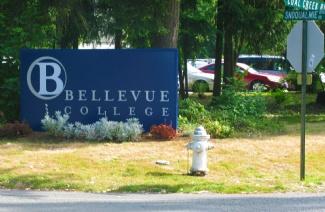GMAT真题是GMAT考试水平最真实和直接的体现,考生在备考的过程中想要了解自己的备考水平,可以找一套真题进行练习。本文小编为大家带来
At the end of the nineteenth century, a rising interest in Native American customs and an increasing desire to understand Native American culture prompted ethnologists to begin recording the life stories of Native American. Ethnologists had a distinct reason for wanting to hear the stories: they were after linguistic or anthropological data that would supplement their own field observations, and they believed that the personal stories, even of a single individual, could increase their understanding of the cultures that they had been observing from without. In addition many ethnologists at the turn of the century believed that Native American manners and customs were rapidly disappearing, and that it was important to preserve for posterity as much information as could be adequately recorded before the cultures disappeared forever.
There were, however, arguments against this method as a way of acquiring accurate and complete information. Franz Boas, for example, described autobiographies as being “of limited value, and useful chiefly for the study of the perversion of truth by memory,” while Paul Radin contended that investigators rarely spent enough time with the tribes they were observing, and inevitably derived results too tinged by the investigator’s own emotional tone to be reliable.
Even more importantly, as these life stories moved from the traditional oral mode to recorded written form, much was inevitably lost. Editors often decided what elements were significant to the field research on a given tribe. Native Americans recognized that the essence of their lives could not be communicated in English and that events that they thought significant were often deemed unimportant by their interviewers. Indeed, the very act of telling their stories could force Native American narrators to distort their cultures, as taboos had to be broken to speak the names of dead relatives crucial to their family stories.
Despite all of this, autobiography remains a useful tool for ethnological research: such personal reminiscences and impressions, incomplete as they may be, are likely to throw more light on the working of the mind and emotions than any amount of speculation from an ethnologist or ethnological theorist from another culture.
1. Which of the following best describes the organization of the passage?
(A) The historical backgrounds of two currently used research methods are chronicled.
(B) The validity of the data collected by using two different research methods is compared.
(C) The usefulness of a research method is questioned and then a new method is proposed.
(D) The use of a research method is described and the limitations of the results obtained are discussed.
(E) A research method is evaluated and the changes necessary for its adaptation to other subject areas are discussed.
2. Which of the following is most similar to the actions of nineteenth-century ethnologists in their editing of the life stories of Native Americans?
(A) A witness in a jury trial invokes the Fifth Amendment in order to avoid relating personally incriminating evidence.
(B) A stockbroker refuses to divulge the source of her information on the possible future increase in a stock’s value.
(C) A sports announcer describes the action in a team sport with which he is unfamiliar.
(D) A chef purposely excludes the special ingredient from the recipe of his prizewinning dessert.
(E) A politician fails to mention in a campaign speech the similarities in the positions held by her opponent for political office and by herself.
3. According to the passage, collecting life stories can be a useful methodology because
(A) life stories provide deeper insights into a culture than the hypothesizing of academics who are not members of that culture
(B) life stories can be collected easily and they are not subject to invalid interpretations
(C) ethnologists have a limited number of research methods from which to choose
(D) life stories make it easy to distinguish between the important and unimportant features of a culture
(E) the collection of life stories does not require a culturally knowledgeable investigator
4. Information in the passage suggests that which of the following may be a possible way to eliminate bias in the editing of life stories?
(A) Basing all inferences made about the culture on an ethnological theory
(B) Eliminating all of the emotion-laden information reported by the informant
(C) Translating the informant’s words into the researcher’s language
(D) Reducing the number of questions and carefully specifying the content of the questions that the investigator can ask the informant
(E) Reporting all of the information that the informant provides regardless of the investigator’s personal opinion about its intrinsic value
5. The primary purpose of the passage as a whole is to
(A) question an explanation
(B) correct a misconception
(C) critique a methodology
(D) discredit an idea
(E) clarify an ambiguity
6. It can be inferred from the passage that a characteristic of the ethnological research on Native Americans conducted during the nineteenth century was the use of which of the following?
(A) Investigators familiar with the culture under study
(B) A language other than the informant’s for recording life stories
(C) Life stories as the ethnologist’s primary source of information
(D) Complete transcriptions of informants’ descriptions of tribal beliefs
(E) Stringent guidelines for the preservation of cultural data
7. The passage mentions which of the following as a factor that can affect the accuracy of ethnologists’ transcriptions of life stories?
(A) The informants’ social standing within the culture
(B) The inclusiveness of the theory that provided the basis for the research
(C) The length of time the researchers spent in the culture under study
(D) The number of life stories collected by the researchers
(E) The verifiability of the information provided by the research informants
8. It can be inferred from the passage that the author would be most likely to agree with which of the following statements about the usefulness of life stories as a source of ethnographic information?
(A) They can be a source of information about how people in a culture view the world.
(B) They are most useful as a source of linguistic information.
(C) They require editing and interpretation before they can be useful.
(D) They are most useful as a source of information about ancestry.
(E) They provide incidental information rather than significant insights into a way of life.

















